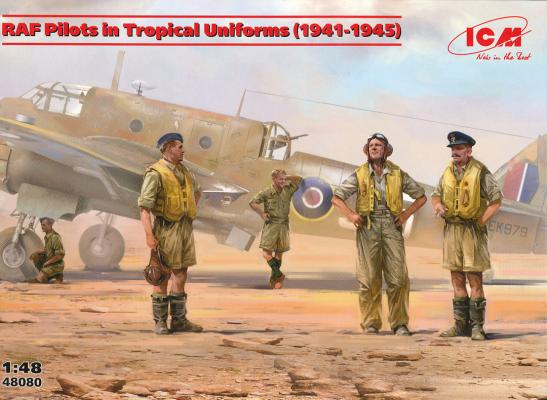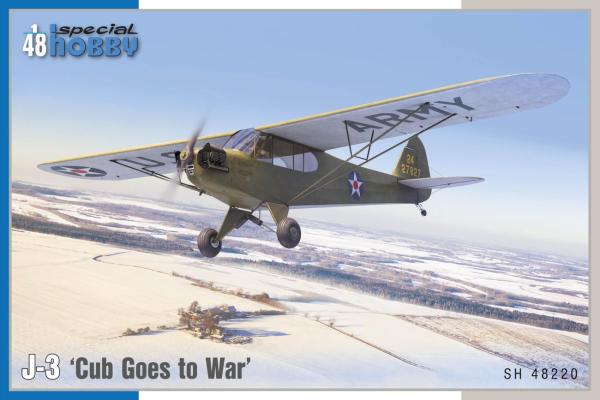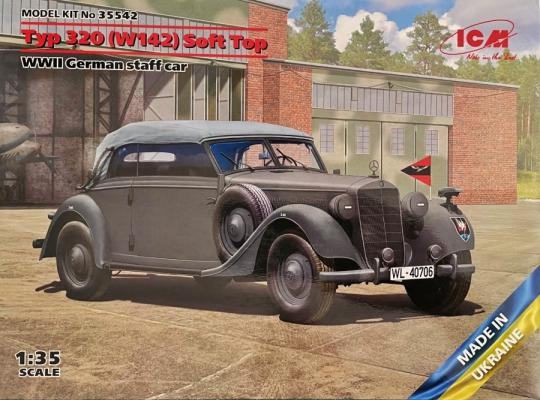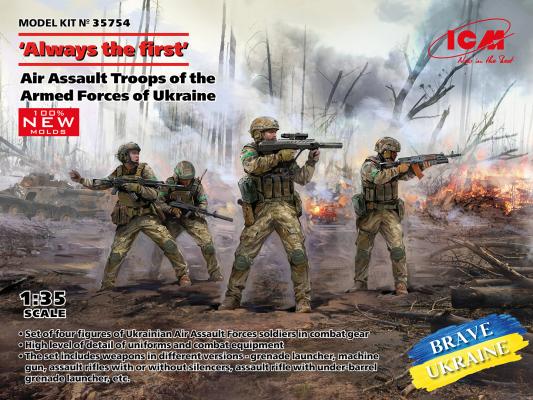Not to be confused with RAF Pilots in Tropical Uniforms (1941-45) in 1/32, this all-new figure set depicts five RAF servicemen in tropical rig and will be suitable for dioramas and vignettes in North Africa, the Middle East, Italy and the Far East for that time period.
The standard ICM white box comes with a colour slip cover with boxart of the figures posed in front of a North Africa-based Beaufort. The box contains a single medium grey plastic runner with 31 well-detailed and well-moulded parts. No decals are included, though it might have been nice to have some RAF wings and rank insignia to add where appropriate. A single full-colour painting guide with part numbers and colour callouts for ICM paints is all that is included (or indeed necessary!) in the box.















